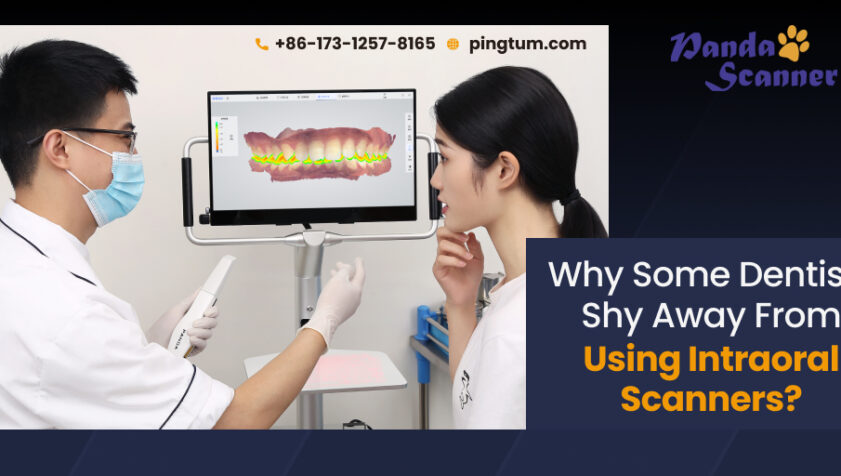Dentistry has undergone a huge change, and this has been possible only because of the digital technologies that have helped advance the field by leaps and bounds. Among the various inventions, the intraoral scanner has contributed immensely to this field. The reason is that it helps dentists see the interior of the patient’s oral cavity in 3D. Under traditional dentistry, this was not possible. Further, digital scanners help to streamline the dental workflow of the dentist at his/her clinic and eliminate the limitations that are present in conventional dentistry. As it helps to speed up the delivery, enables to give a better patient experience, and offers more benefits. However, there are dentists who are not willing to switch to digital dentistry, and they are reluctant to integrate intraoral scanners with their dental clinics. Why? Let’s know some of the reasons that unreasonably stop dentists from going digital.

Top Reasons Why Some Dentists Are Wary of Investing in Intraoral Scanners
Some dentists are of the notion that traditional dentistry is enough for their dental practices, and believing in such reasons makes them completely unaware of what digital dentistry can offer. Let’s check out what are some of these reasons, and whether they are considerable or not.
Cost
The cost of an intraoral scanner can disappoint some dentists right away. After checking the intraoral scanner’s price, they consider the probable ROI of using such a device. However, since they are not aware of the host of benefits that are offered by these scanners, their estimates tend to be wrong and give them a wrong idea about these scanners. In reality, however, the intraoral scanner can save costs for a dentist by eliminating the need for impression retakes, as these devices obtain accurate impressions, Plus, the need for storage space that is required to store the physical impressions can also be eliminated since the impressions captured can be stored virtually. So, when it comes to cost, if the dentist compares the two properly, they might see how intraoral scanners can be a hugely cost-saving device.
Not-tech savvy
Investing in an intraoral scanner means that the dentist is buying it to use it. However, when it comes to a new device, one needs to learn the features, and user details to use it properly. However, some dentists just shy away from using new digital devices because they consider themselves non-tech savvy. Furthermore, learning to use the new device would be a monumental task for them. This way, they miss out on diagnosing and treating a patient’s condition properly and waste a lot of extra time that could have been saved if he/she used an intraoral scanner. Further, they cannot see or let the patient see the treatment through the chairside screen, which is possible with the help of intraoral scanners.
Not convinced about the technology
In the primary stages, when the intraoral scanner had just been introduced, these devices were still evolving by leaps and bounds, since they had scope for improvement. This made some dentists believe that these intraoral scanners have a very steep learning curve and that their accuracy is still unreliable. The scenario has changed now, as the intraoral scanners have improved drastically, whether in terms of usability or precision, and their superiority exceeds traditional dentistry by many degrees.
Change in workflow
Dentists generally become extremely familiar with and attached to the way they have been working for years. So, when it comes to the intraoral scanner, they show reluctance. This is because they are not sure whether they would be able to handle the workflow changes. This is why it is important to buy an intraoral scanner after checking its features. By showing reluctance to learn, the dentist would not be able to optimise the workflow, improve his/her productivity, and increase efficiency in his/her work. Now, all these factors help boost the dentist’s growth in his/her career.
Conclusion
Change is the only thing that is constant. However, many are not able to grasp the change easily and take time to embrace it. While a rising number of dentists are preferring digital dentistry to traditional dentistry, there are still some dentists who shy away from using intraoral scanners. The above reasons are why they mainly avoid using digital scanners; however, if you are a dentist who has not embraced digital dentistry yet, know that you may lag behind your competitors, not letting your patients enjoy a comfortable dental treatment.






